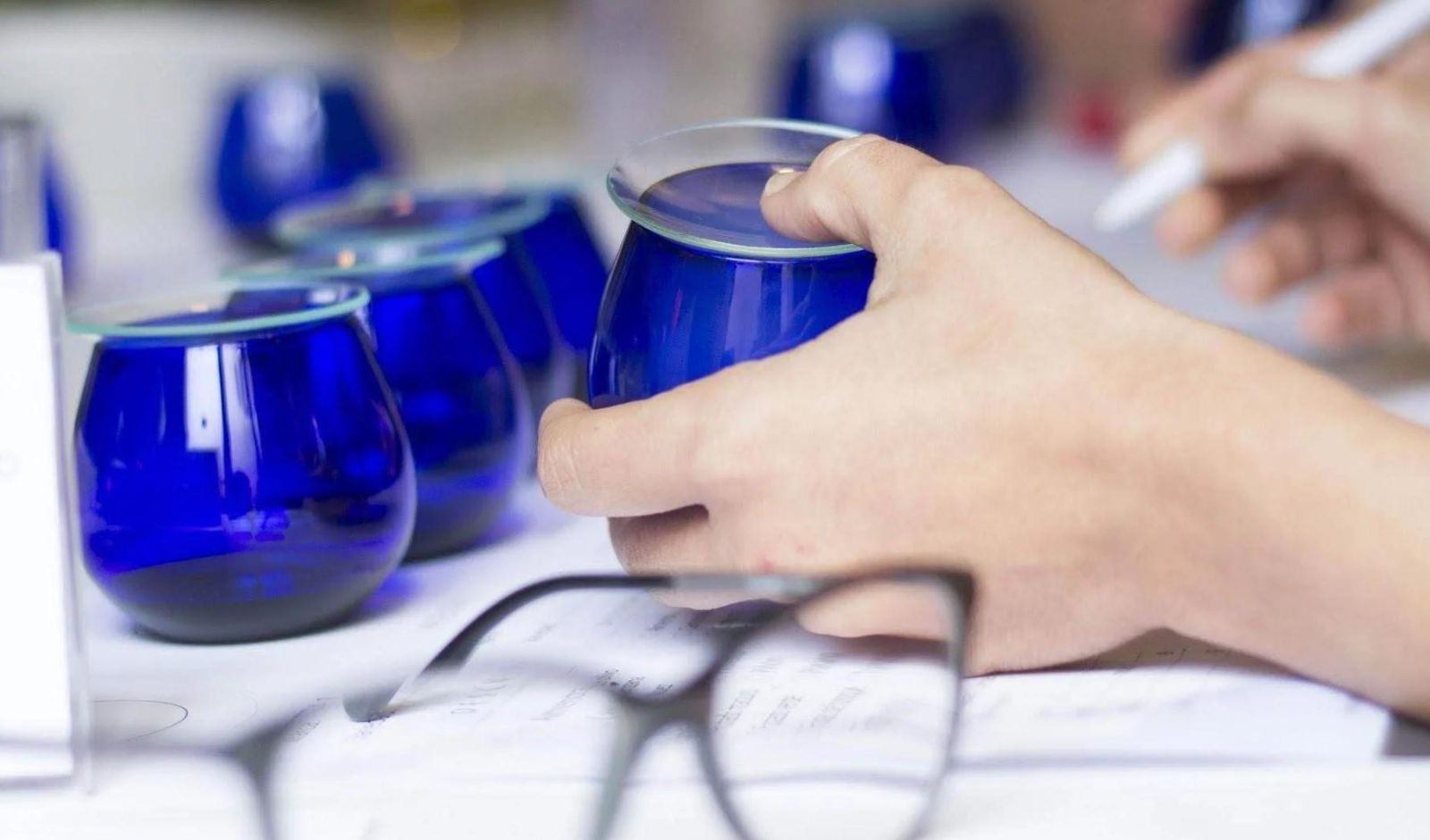
An Introduction to Olive Oil Tasting
Olive oil quality has been prominent in the news recently, with headlines telling us that our extra virgin olive oil might not really be extra virgin.
A pall of suspicion has been cast over the kitchen cupboard; how are we to know if that pretty bottle of olive oil has been lying about its extra virgin status? What’s a consumer to do?
It is true that there is some serious hanky panky going on in the ranks of extra virgin olive oil. The issues of adulteration, mislabeling and regulation are all real, complex and very important.
That does not mean, however, that there is no hope for olive oil consumers until all these big issues are resolved. On the contrary, by learning a little, consumers can benefit a lot.
he logical place for an olive oil education to start is with tasting. All the reading in the world isn’t going to mean a thing unless you can connect it to the sensory experience — the aroma and taste of olive oil.
Professional olive oil tasters sip the oil straight from little blue glasses that look like votive candle-holders from your favorite café. Although ultimately we must remember that olive oil is an ingredient in food, tasting it straight does have the advantage of giving you a completely undisguised taste of the oil.
Don’t be scared. A little sip of olive oil won’t hurt you — it’s actually very nice once you get used to the idea — and it will help you learn to recognize characteristics without the complication of other flavors.
The aromas of olive oil are a critical part of its flavor. The best way to appreciate them is to pour a little bit of olive oil (a tablespoon or two) into a small wineglass (or nifty blue tasting glass if you have it).
Cup the glass in one hand and cover it with the other to trap the aromas inside while you warm it up. Hold it, swirl it, warm it for a minute or two. Then stick your nose into the glass and take a good whiff of the aroma or “nose” of the olive oil.
You may notice the smell of fresh-cut grass, cinnamon, tropical fruits or other aromas of ripe or green olive fruit. This is a good time to point out that the word “fruity” in olive oil can refer to vegetable notes, i.e. green olive fruit, as well as to ripe fruit notes. So think of artichokes, grass and herbs as “fruit” when you taste olive oils!
Now take a sip of the oil. Don’t be too wimpy about it; if you don’t get a decent amount you won’t appreciate all the qualities of the oil because it is only getting on the tip of your tongue. You ideally want to get the impressions of the entire mouth and tongue.
Suck air through the oil to coax more aromas out of it, and then — this is important — close your mouth and breathe out through your nose. This “retronasal” perception will give you a whole bunch of other flavor notes. Retronasal perception is possible because your mouth connects to your nose in the back. Now swallow some or all of the oil.
Pungency is a peppery sensation, detected in the throat, so swallowing some oil is important. Pungency is a positive characteristic of olive oil. It is a chemical irritation, like the hotness of chilies, and equally appealing once you get used to it.
Once you start to get into that spicy kick, it is hard to imagine life without it. Pungency can be very mild — just the tiniest tingle — or it can be intense enough to make you cough. Olive oil aficionados will sometimes refer to a one, two, or look out, a three-cough oil.
The third of the three positive attributes of olive oil, in addition to fruity and pungent, is bitter. Bitterness, like pungency, is also an acquired taste. As anyone who has ever tasted an olive right off the tree can attest, bitter is a prominent taste in fresh olives.
Curing olives for the table, in fact, has to start with a debittering process. Since olive oil is made from uncured olives, varying degrees of bitterness can be found; oil made from riper fruit will have little to no bitterness, oil made from greener fruit can be distinctly bitter.
American taste horizons are broadening; we are exploring bitterness with foods like dark chocolate, bitter salad greens and now, robust olive oils.
The fruity characteristics you may notice in the mouth include nutty, buttery and other ripe flavors and a fuller spectrum of green fruity notes. Another characteristic that is most pronounced in this retronasal perception, is rancidity — we will explore that when we look at the common defects of olive oil in another article. The traditional palate cleanser between olive oils is water, plain or sparkling, and slices of Granny Smith apple.
Once you have tasted an olive oil plain, the next step is to taste it in combination with food. This is where olive oil comes to life, as one of the flavors in a dish.
Wine presents a good analogy: a wine that is great with food might not be appropriate as an aperitif. Olive oil is the same: sometimes an olive oil that seems over-the-top pungent and bitter by itself or with bread, is perfection itself when used to top a hearty bean soup.
Pairing olive oils and foods is an entire discussion of its own, but for a great learning experience, try three different olive oils — one delicate, one medium, one robust — with a variety of items. Good choices are warm boiled potatoes, fresh mozzarella, ripe tomatoes, bread, warm cooked white beans, salad greens, seasonal cooked vegetables, grilled steak, poached or grilled chicken; pretty much whatever is for dinner. Cook things simply, without a lot of added seasonings, but be sure you have some sea salt on hand.
Now taste pieces of the same food dipped in each of the oils. Notice how the flavors interact. Is it a harmonious mix? A contrast? Does one flavor overwhelm the other, or do they balance well?
This is a fun thing to do with a group of friends: you can taste together and compare impressions. Add a couple of wines — a red and a white — to complete the pairings, and you have yourself a dinner party.
Shop
Elaiolado Makris PDO is extracted exclusively by mechanical means from the fruits of the indigenous Makri olive of the species Olea Europea, which is cultivated in the designated zone of Alexandroupolis, from the village of Makri
It is typical of Lesbos and mainly produced from the Kolovi variety, which endows it with its strong, fruity character. Its blend however, includes also the varieties of Adramytiani and some Latholia.
This unique extra virgin olive oil is produced exclusively by Koroneiki variety olive trees, up to 100 years of age, in the small mountainous village of Ancient Skillountia, at the sacred land of Olympia
Our organic olive trees of Koroneiki variety, in the sacred land of Olympia, remain untouched by human intervention.
